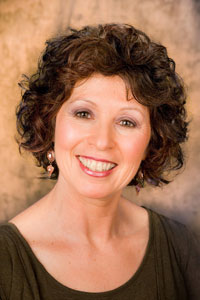By Noa Baum
 A young storyteller came up after a performance and said to me:
A young storyteller came up after a performance and said to me:
“I was so moved, your story was so expressive, I could never tell like you!”
I remembered feeling like that…
I grew up in Israel and was an actress and a storyteller in my native language – Hebrew. When I first heard professional storytellers in America, in 1992, I experienced joy and a sense of belonging – here are my people! At the same time, around me, people in the audience were laughing but I didn’t get the cultural references, and the way those storytellers played with words! It was so beautiful I thought: “I could never tell a story in English like that.”
I speak English fluently and yet, speaking fluently is very different from being fluent and seeking artistic expression as a professional storyteller, in English.
Every language has layers and levels, from the spoken vernacular to the literary and poetic. Storytellers move naturally between these levels. Storytelling is rooted in poetry, in the music and rhymes of the Bards and ancient prophets. In Hebrew, images and metaphors come naturally. I can spontaneously flow from the poetic to the vernacular, combine Biblical language with modern, and adjust the various levels to the specific story, audience or moment. In English – it’s conscious work and not spontaneous.
In addition, Storytelling exists in cultural context.
When I first told my personal story “A Land Twice Promised”, in Hebrew, in Israel, it felt very different from all the times I had told it in English in the U.S.
Where I had grown accustomed to polite silence I was getting laughs of recognition; Words and images needed no explanations: everyone had visual, sensory and emotional connotations when I mentioned “The Wailing Wall” or “Suk” (market). Cultural idioms like “No Choice,” in Israel, have connotations wider than the words, like “Get your kicks on route 66” does here.
Most of all it felt easy, like I’m telling OUR story, because I was telling in my own culture.
Traditionally the role of the storyteller has always been to remind us who we are. When we tell in our own culture – it is easier, we are telling OUR story in ways that are familiar to our listeners. But being a storyteller in America, a multicultural immigrant society, poses new challenges. As storytellers today we need to sharpen our ability to communicate with more than words, engaging all aspects of spoken language – vocal, facial expression, gestures, etc., to connect with our listeners.
Telling in a foreign language, outside of my cultural context, forced me to discover and develop my strengths as a storyteller. I learned to trust my skills and theatrical background to communicate beyond the words.
At our NSN conference this summer I offered a workshop titled: Beyond Words – Wake Up Your Expressive Potential, focusing on the non-verbal elements of storytelling.
To make any story come alive, you have to be fully present. Your physical, vocal and emotional presence, are essential ingredients to communication.
No matter how fluent in a language you may be, it’s not just what you say, but how you say it that creates a memorable story.
I thanked the lovely young storyteller and said: “You know, our styles reflect our strengths and limitations. Discover your strength, develop and learn to trust it, and then go tell a story like YOU!”
About Noa
Israeli born Noa Baum was an actress with the Khan Theater of Jerusalem, studied with Uta Hagen in NY and received an MA from NYU. Her one-woman show A Land Twice Promised relives her heartfelt dialogue with a Palestinian woman, illuminating the complex and contradictory history and emotions surrounding Jerusalem for Israelis and Palestinians alike.
Noa performs and teaches internationally, highlights include: The World Bank, US Defense Department, Mayo Clinic, Fabula Festival, Sweden, Hebrew University and The Kennedy Center. Winner of Parents’ Choice Recommended Award and recipient of numerous Awards from Maryland State Arts Council, she lives in Maryland.
Contact Noa
Website: www.noabaum.com
Email:
View Stories:
